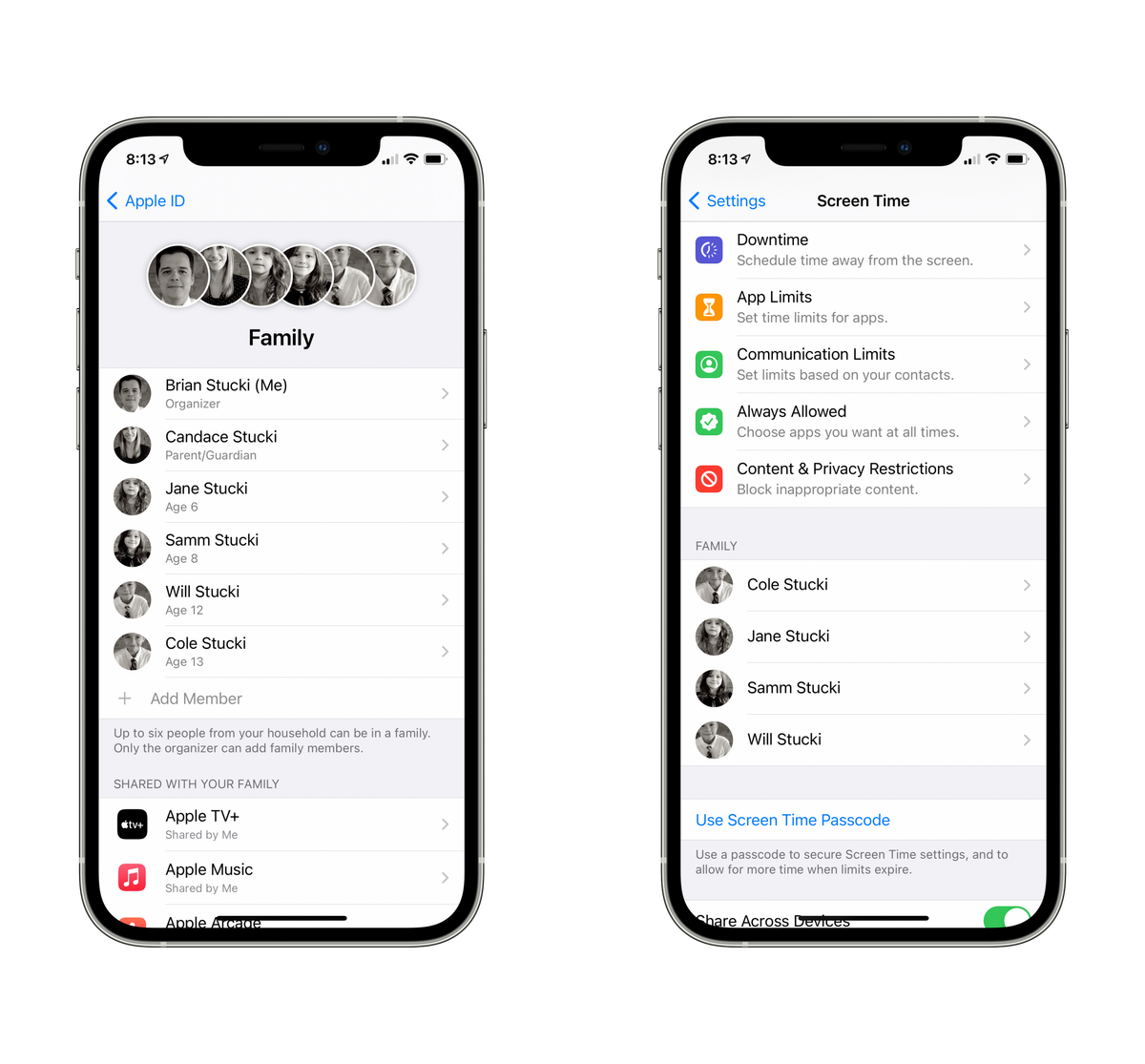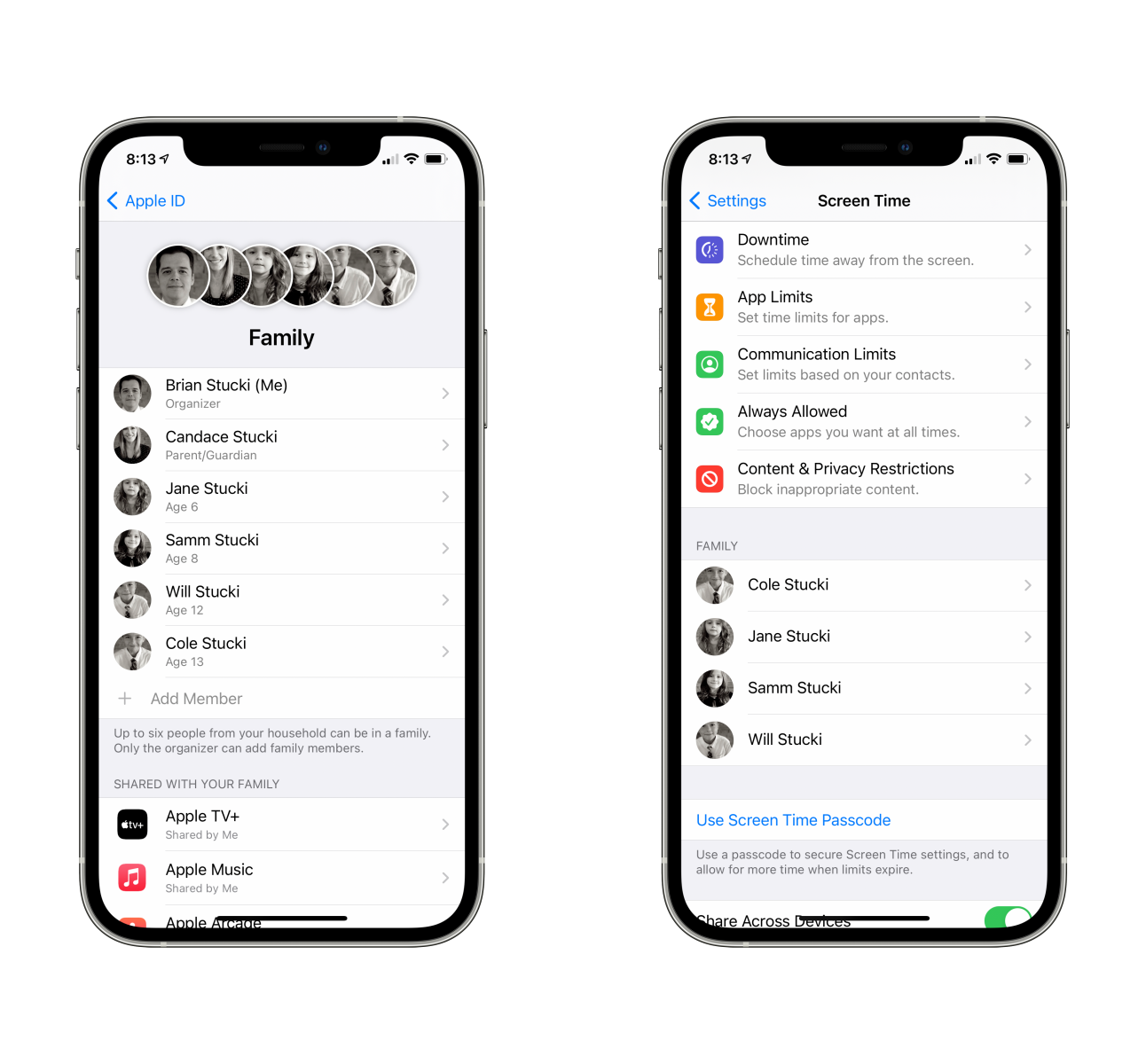Technology and Families

I’ve written before about using technology with intent. It is a commitment of a little time up front that pays plentifully in time and attention over years.
It’s time to tap the glass again. Especially for families.
Apple shared a new site called, “Apple for Kids.” (Update: It looks like that page is no longer available. Here is a similar one from Apple geared toward families.) It contains a number of simple processes that will help everyone in the family form good habits with technology. If your house is full of iPhones and iPads, take some time and apply these settings.

A few observations:
- It’s time to stop sharing an Apple ID for everyone in the family. (And I’m very aware of what it’s like to work through Apple ID changes.) Setting everyone up with their own Apple ID will bring a number of benefits now and as they grow older.
- Family Sharing allows a parent/parents to share purchases, services, maintain iOS devices from afar, and so much more. Recently they’ve given the ability for in-app purchases to be shared across a family even. The benefits keep coming.
- Screen Time is free, built into iOS and very helpful. Take some time to figure it out. In our family, the phones become useful tools during the school hours and in the evenings/nights. In the afternoon, the games and video apps unlock for a bit to help our kids relax and have fun with friends.
- I highly recommend that all of these settings be setup in plain sight of everyone in the family. Sit down, talk about why these safe perimeters are being put in place, decide to respect them as a family and talk through any future changes. One conversation can set the stage for success.
- Apple Cash Family is an easy way to pay allowance and save money.
- Family Sharing will let you help your kids maintain their contacts, reset passcodes if needed, and find lost devices.
- Content and Privacy settings are built into screen time. Please don’t allow children to be bombarded.
How important is action?
I have spent over a decade sitting with young people and talking about the ways they would like to be helped as they grown and learn. In nearly every conversation, these youth tell me that they would welcome more help from their parents if they thought the conversation could be held. They want to do well, and they want to do it before they have to learn the pain of doing not well.
This isn’t just about moral decisions. This is about better sleep habits. This is about better personal skills. This is about personal confidence.
Here are a few articles you might read with your spouse, your children, and with your adult siblings. Make a choice to act.
Social media damages teenagers’ mental health: Use social media in wise and limited ways. “Heavy social media use was linked to negative wellbeing and self-esteem, regardless of a young person’s mental state, with more girls experiencing feelings of depression and hopelessness.”
How to overcome Phone Addiction: Here are some concrete signs of phone addiction and also some concrete steps you can take to decrease the dependency. This applies for adults and children.
How Much Sleep Do We Really Need?: If I could suggest one change for every family, do not let iPhones be in bedrooms over night.
Alarm clock. I know. But there are nice, modern, clean ones for $20.
It’s not just about what might be happening overnight. It’s about the constant draw to anything that is happening. Notifications, midnight check-ins, etc.
Setup a charging station on a counter or table in a public place or in your bedroom. Be sure phones are checked in to charge overnight. (If it’s in the parent’s room, you’ll be shocked by how many alerts come through every night. Turn those off.)
Genes and Addiction: Kids can be trusted. We’re surrounded by good kids doing going things. Kids are also kids and the mind is still developing and it’s not their fault. They need help.
“They take risks because of their underdeveloped prefrontal cortex, the part of the brain responsible for reasoning and decision making and which regulates impulses. While it grows during the pre-teen years, it is pruned back during adolescence…and finishes developing in the mid-20s. Meanwhile, the parts of the brain that guide emotion (the amygdala) and that seek pleasure and reward (the nucleus accumbens) mature more quickly.”
No Action is an Action
Whatever you decide to do. Do something.
—
A tip for my entrepreneurial young friends: Learn how to set up this stuff really well and offer your services to parents and young families. Charge a fair rate. Make money. And in the mean time, you too will learn how important these safety guidelines can be.
Everyone wins.